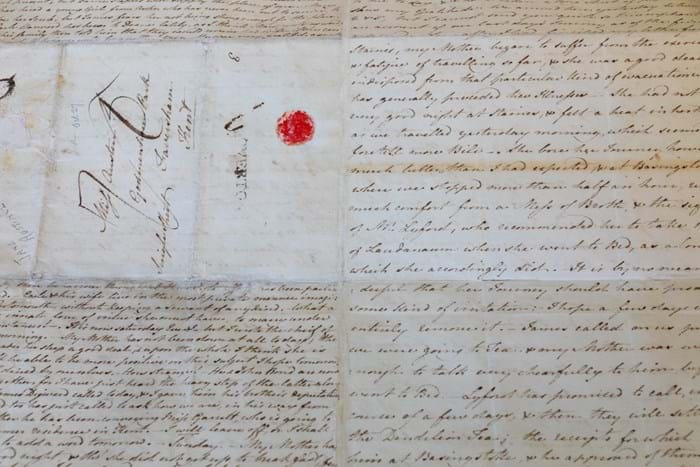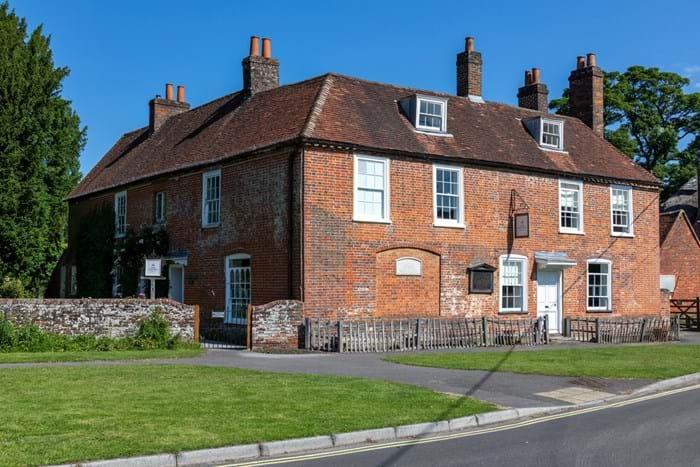The letter to her sister Cassandra, dated 1798, came to Cheffins from the estate of a Cambridge collector who had acquired it 22 years ago from London dealer Bernard Quaritch. It is one of only around 160 Jane Austen letters to survive and is among the earliest in existence.
The fact that many of Jane’s letters to her sister were destroyed by Cassandra two or three years before her own death means survivors such as this are few and far between.
The letter has now gone on display at the museum following its acquisition via the Acceptance in Lieu scheme, settling £140,000 in tax.
The price is roughly in line with another autograph letter sold at Bonhams New York for a record $160,000 (£124,000) in 2019. Also in 2019 Jane Austen's House raised £35,000 to buy a fragment of a letter from 1814 which was being sold by London dealer Maggs.
Director at Cheffins Martin Millard said: “The letter had come to us from the estate of a local Cambridge resident, who had acquired it in 2000 to add to a small, but deftly invested, collection.
“It was the family’s wish and our recommendation that the letter go to Jane Austen’s House, and we are pleased to have brokered this transaction on behalf of our client.”

The Jane Austen letter to her sister Cassandra which has been acquired by Jane Austen’s House, settling £140,000 in tax.
Image: Luke Shears
“Window into her personality”
Jane Austen wrote the letter from Steventon Rectory, the Austen family home in Hampshire, on 27-28 October 1798. At the time Cassandra was staying at Godmersham Park in Kent, the home of their brother Edward.
A long, chatty and typically witty autograph letter (it is signed with her initials), it was written across four pages on a single large folio folded three times. It retains the address panel, postmark and a trace of the red wax seal.

The Jane Austen letter is typical of her style, covering a range of subjects including witty remarks about members of the writer’s social circle.
Image: Luke Shears
The letter offers an insight into Austen’s social circle, domestic life and the realities of travel in the late 18th century, all written with Austen’s engaging and frequently biting wit. Millard described it as “lively, vivid, funny and a brilliant window into her personality”.
In the letter she filled her sister in on the local news, commenting somewhat savagely: “Mrs Hall of Sherbourn was brought to bed yesterday of a dead child, some weeks before she expected, oweing to a fright. I suppose she happened unawares to look at her husband…”
With her mother ill in bed upstairs, Jane announced her new status in the household with mocking self-importance: “I am very grand indeed… I carry about the keys of the Wine & Closet; twice since I began this letter, have had orders to give in the kitchen: Our dinner was very good yesterday, & the Chicken boiled perfectly tender; therefore I shall not be obliged to dismiss Nanny on that account…”
And with whimsical affectation, she wrote: “Next week (I) shall begin my operations on my hat, on which you know my principal hopes of happiness depend.”
Family provenance
The letter was among the manuscripts bequeathed by Cassandra to Jane Austen’s niece, Fanny, Lady Knatchbull, and it was then inherited by Fanny’s son, Lord Brabourne in 1882, who later published it in his edition of the Letters of Jane Austen.
It is estimated that Jane Austen wrote 3000 letters in her lifetime. A total of 95 of the 160 surviving letters were written to Cassandra.
Of those 160 that remain, around a third of them are now in the Morgan Library in New York while Jane Austen’s House in Chawton now holds 16 letters written by her as well as others written by her close family.
Jane Austen’s House, which has been a museum since 1949, was Austen’s home for the last eight years of her life. The property was where wrote, revised and published many of her best known novels including Sense and Sensibility, Pride and Prejudice, Emma and Mansfield Park.
The letter is currently part of its new exhibition titled My dear Cassandra…, which opened this week and explores Jane’s special relationship with her sister. For more information visit janeaustens.house








